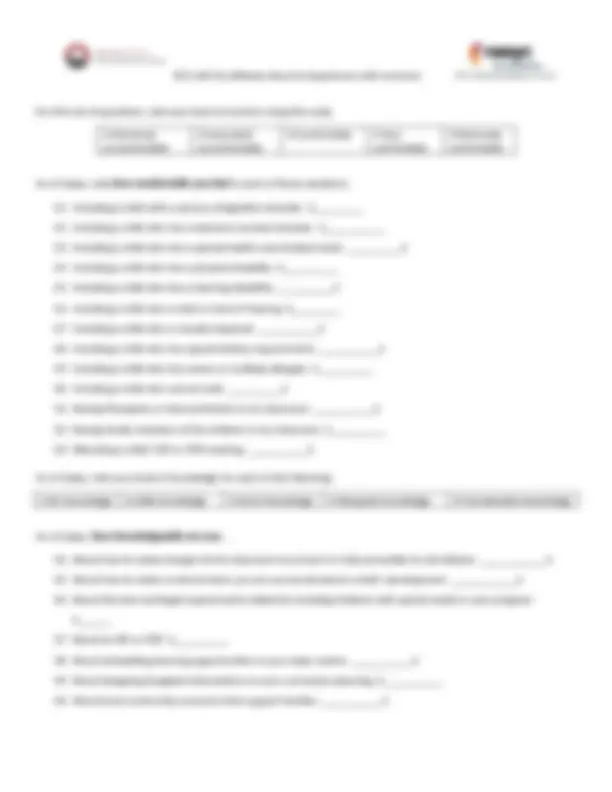



Study with the several resources on Docsity

Earn points by helping other students or get them with a premium plan


Prepare for your exams
Study with the several resources on Docsity

Earn points to download
Earn points by helping other students or get them with a premium plan
Community
Ask the community for help and clear up your study doubts
Discover the best universities in your country according to Docsity users
Free resources
Download our free guides on studying techniques, anxiety management strategies, and thesis advice from Docsity tutors
A scale of 20 statements about inclusion in early childhood education, asking the reader to rate their level of agreement or disagreement with each statement. The statements cover topics such as the influence of personal beliefs on inclusion, the ability of children with disabilities to participate in typical classroom activities, and the benefits of inclusion for all children. insight into the attitudes and beliefs of the reader regarding inclusion in early childhood education.
Typology: Exercises
1 / 2

This page cannot be seen from the preview
Don't miss anything!


ECE 260 My Attitude About & Experience with Inclusion On a scale of 1-5, please honestly rate your current level of feelings, ideas, and beliefs for each of the following: 1-Strongly disagree 2-Disagree 3-Neither agree nor disagree 4-Agree 5 - Strongly agree
ECE 260 My Attitude About & Experience with Inclusion For this set of questions, rate your level of comfort using this scale. 1-Extremely uncomfortable 2-Somewhat uncomfortable 3-Comfortable 4-Very comfortable 5 - Extremely comfortable As of today, rate how comfortable you feel in each of these situations.